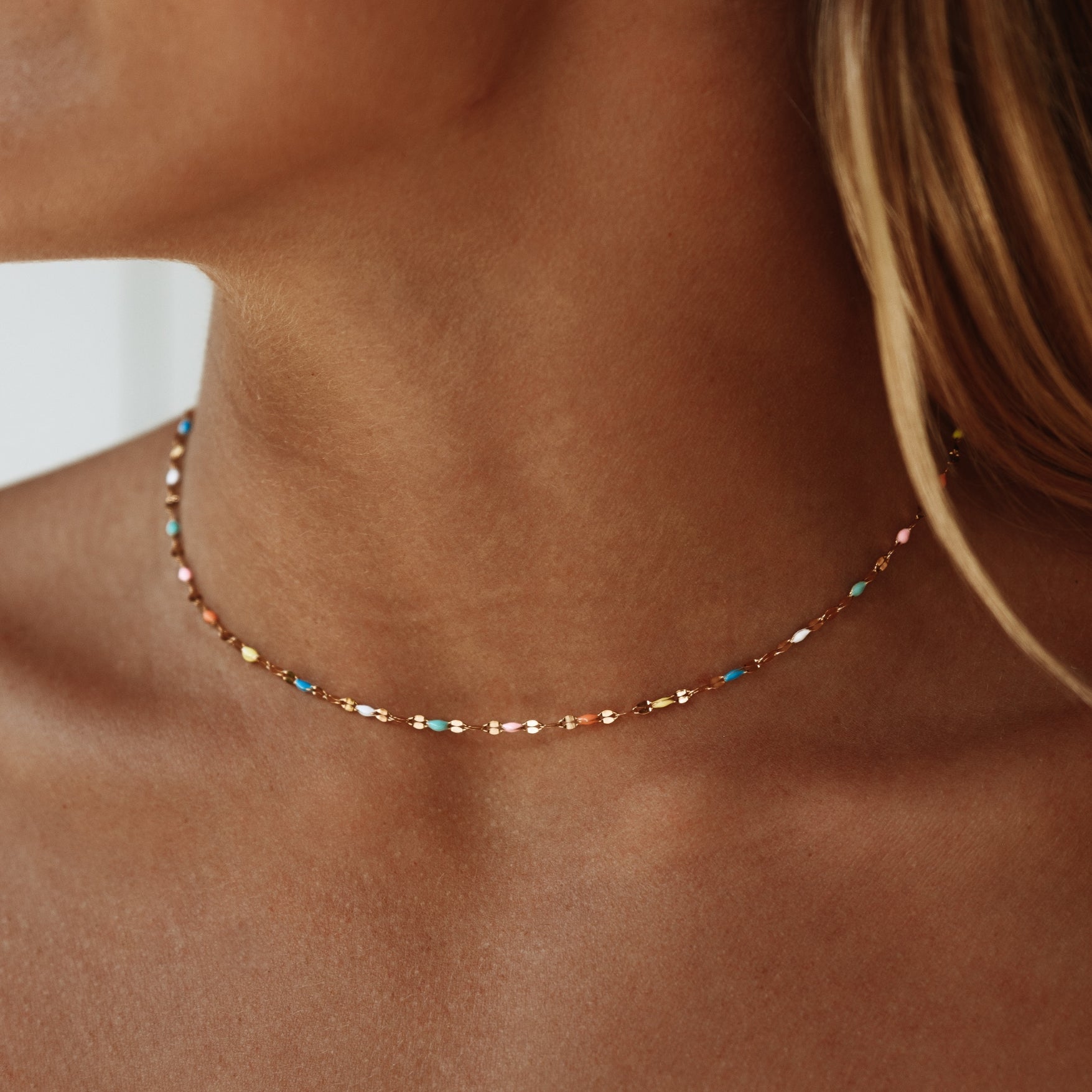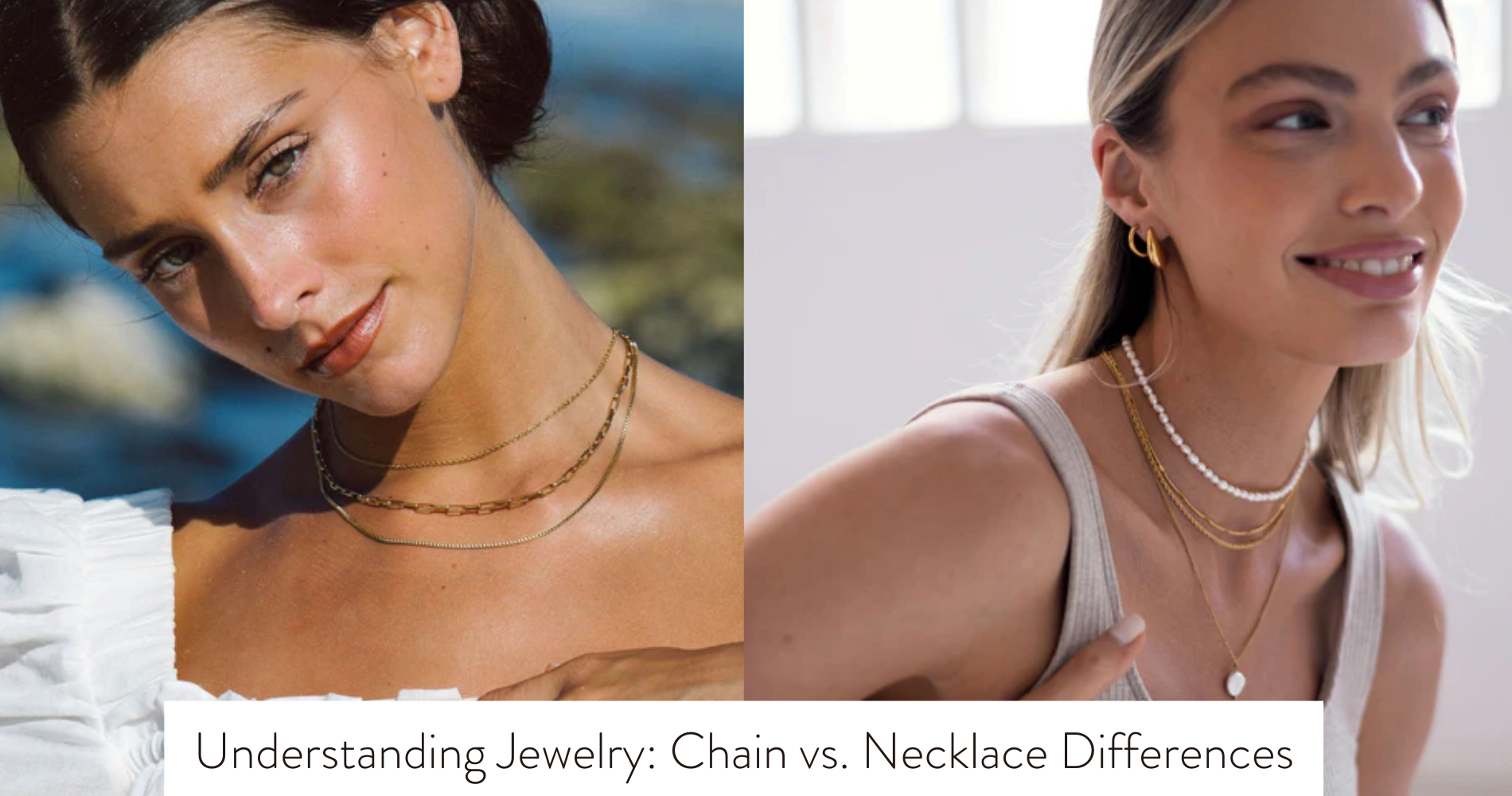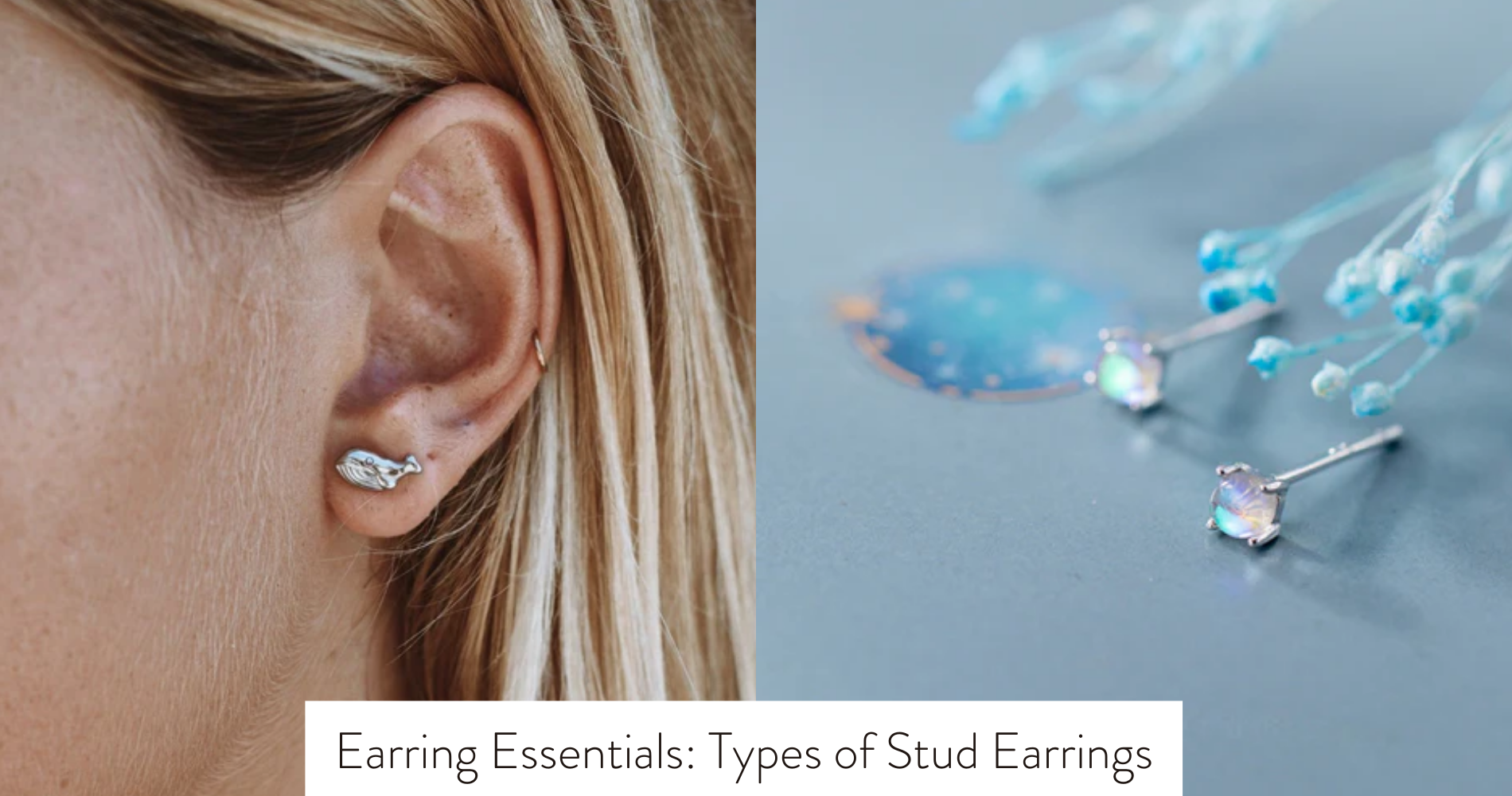
Material Matters: Sterling Silver vs. Stainless Steel
When choosing between Sterling Silver and Stainless Steel, consider their differences. Sterling Silver contains 92.5% silver with a rich luster but is prone to tarnishing. Stainless Steel blends steel and chromium, offering excellent tarnish resistance and durability. Stainless Steel is harder, more resistant to corrosion, scratches, and impacts. It requires less maintenance than Sterling Silver. If you want to learn more specifics about their composition, durability, maintenance, hypoallergenic properties, cost, versatility, aesthetic appeal, environmental impact, and resale value, you'll get a clearer picture of which one suits your preferences.
Composition
When comparing sterling silver and stainless steel, the composition of each material plays an essential role in determining their unique characteristics and properties. Sterling silver is a combination of 92.5% pure silver and 7.5% of other metals, usually copper, to enhance its durability. This high metal purity gives sterling silver its unmistakable luster and elegance. However, due to its high silver content, sterling silver is prone to tarnishing over time. To prevent tarnish, sterling silver jewelry is often plated with a thin layer of rhodium or coated with a special anti-tarnish solution.
On the other hand, stainless steel is made from a mixture of steel and chromium, which provides excellent tarnish resistance. The metal composition of stainless steel makes it highly resistant to rust, corrosion, and discoloration. This makes stainless steel jewelry a popular choice for those seeking durable and low-maintenance pieces that retain their shine over time.
Durability
When considering durability between sterling silver and stainless steel, you'll find that wear and tear play a significant role. Sterling silver tends to tarnish and scratch more easily than stainless steel, which can impact its long-term resilience.
In contrast, stainless steel is known for its ability to withstand daily use and maintain its appearance over time.
Wear and Tear
Comparing sterling silver and stainless steel, the durability of each metal varies considerably. When it comes to wear and tear, understanding the differences can help you make an informed decision:
- Corrosion Resistance: Stainless steel excels in resisting corrosion, making it ideal for everyday wear, especially in environments with high humidity.
- Scratch Resistance: While both metals can get scratched, stainless steel tends to hold up better against everyday wear and tear than sterling silver.
- Tarnish Prevention: Stainless steel doesn't tarnish, unlike sterling silver, which may require regular polishing to maintain its shine.
- Metal Hardness: Stainless steel is harder than sterling silver, making it less prone to dents and dings in daily use.
Long-Term Resilience
Sterling silver and stainless steel both exhibit distinct characteristics when it comes to long-term resilience, impacting their durability over time. Stainless steel excels in corrosion resistance, making it highly resistant to rust and tarnishing, ideal for long-term wear without significant degradation in appearance. Conversely, sterling silver requires more maintenance to prevent tarnishing over time. When it comes to impact resistance and scratch resilience, stainless steel again has the upper hand, being more durable and less prone to dents and scratches compared to sterling silver. This makes stainless steel a great choice for jewelry or accessories that will undergo daily wear and potential rough handling.
Maintenance
To keep your sterling silver or stainless steel jewelry in top condition, regular maintenance is essential. Here are some tips to help you maintain your jewelry:
- Cleaning Methods: For sterling silver, use a silver polishing cloth or a mild detergent with warm water to gently clean the jewelry. Avoid harsh chemicals that can damage the metal. Stainless steel can be cleaned with warm water and mild soap. Dry it thoroughly to prevent water spots.
- Tarnish Prevention: To prevent tarnishing of sterling silver, store it in anti-tarnish cloth or pouches. Avoid exposing it to harsh chemicals like perfumes or lotions. Stainless steel is more resistant to tarnishing but can still benefit from proper storage to maintain its shine.
- Storage Tips: Store your jewelry in a cool, dry place away from sunlight. Consider using individual pouches or soft cloth to prevent scratches and tangling.
- Polishing Techniques: Use a polishing cloth designed for sterling silver to gently buff away tarnish. For stainless steel, a soft microfiber cloth can help maintain its luster without scratching the surface.
Hypoallergenic
When deciding between sterling silver and stainless steel, it's crucial to take into account their hypoallergenic properties. Some individuals have skin sensitivities that make one material more appropriate than the other. Understanding the reactivity of each metal in jewelry can assist you in making an informed decision based on your specific needs. For those who are particularly sensitive to certain metals, our Hypoallergenic Jewelry collection offers a selection of pieces designed to minimize the risk of skin reactions. This collection features carefully chosen materials that cater to the needs of individuals with sensitive skin, allowing you to enjoy beautiful jewelry without discomfort.
Allergy-Friendly Materials Comparison
Comparison of hypoallergenic materials in sterling silver and stainless steel reveals distinct qualities that cater to individuals with sensitive skin. When considering allergy-friendly materials, here's what you need to know:
- Tarnish Resistance:
- Sterling Silver: Requires regular polishing to prevent tarnishing.
- Stainless Steel: Highly resistant to tarnish, maintaining its shine without extra care.
- Corrosion Resistance:
- Sterling Silver: Prone to corrosion in certain conditions.
- Stainless Steel: Exceptionally resistant to corrosion, ideal for long-term wear.
- Hypoallergenic Properties:
- Sterling Silver: May contain alloys triggering allergies.
- Stainless Steel: Generally hypoallergenic, suitable for sensitive skin types.
Skin Sensitivity Considerations
Considering skin sensitivity, it's essential to prioritize hypoallergenic materials when choosing jewelry such as sterling silver or stainless steel. Skin reactions and metal allergies are common concerns for many individuals, making it important to opt for materials that are less likely to cause irritation.
Before buying jewelry, consider conducting sensitivity testing or seek dermatologist recommendations, especially if you have a history of metal allergies. By selecting hypoallergenic options like sterling silver or stainless steel, you can reduce the risk of experiencing discomfort or adverse skin reactions.
Prioritizing your skin's well-being when choosing jewelry is key to ensuring both style and comfort in your accessories.
Reactivity in Jewelry
To guarantee minimal reactivity in jewelry and prioritize hypoallergenic options, consider the materials used in the pieces you choose, such as sterling silver or stainless steel. When comparing reactivity, stainless steel tends to be more hypoallergenic than sterling silver due to its composition. However, some people may still react to stainless steel due to trace elements.
For tarnish resistance, stainless steel outperforms sterling silver, which can tarnish over time. If you have sensitive skin, stainless steel might be the better choice. Keep in mind that individual reactions vary, so it's crucial to test different materials to see what works best for you.
Cost
When contemplating the cost of sterling silver versus stainless steel jewelry, it's important to analyze the long-term investment aspect. Sterling silver is often perceived as a higher quality material compared to stainless steel due to its precious metal status. This perception influences the affordability of the jewelry pieces. Sterling silver jewelry tends to be more expensive than stainless steel counterparts due to the higher cost of the material itself. While stainless steel offers a more budget-friendly option, the quality may not be as high as sterling silver.
In terms of cost, sterling silver jewelry is viewed as a long-term investment piece that can maintain its value over time. Although the initial price may be higher, the durability and timeless appeal of sterling silver pieces make them a worthwhile purchase. On the other hand, stainless steel jewelry provides a more affordable alternative for those looking to expand their collection without breaking the bank. Ultimately, the decision between sterling silver and stainless steel jewelry comes down to personal preferences, budget considerations, and the intended use of the pieces.
Versatility
Exploring the adaptability of sterling silver and stainless steel jewelry reveals their flexibility to various fashion styles and occasions. When comparing the versatility of sterling silver and stainless steel, consider the following:
- Versatility Comparisons:
- Sterling silver jewelry is renowned for its timeless elegance, making it a flexible choice for both casual and formal wear.
- On the other hand, stainless steel jewelry offers a contemporary and edgy look, perfect for modern fashion statements.
- Style Options:
- Sterling silver pieces are often favored for their classic appeal, making them suitable for traditional outfits and sophisticated ensembles.
- In contrast, stainless steel jewelry is ideal for adding a bold and trendy touch to any outfit, catering to individuals with a more eclectic style.
- Adaptability:
- Sterling silver accessories easily shift from day to night, seamlessly complementing a range of looks.
- Stainless steel jewelry, known for its durability, is well-suited for everyday wear and can withstand the demands of an active lifestyle.
- Occasion Wear:
- Sterling silver pieces are often chosen for special occasions such as weddings or formal events, adding a touch of elegance.
- Stainless steel jewelry, with its modern aesthetic, is a flexible option for everyday wear, effortlessly enhancing any outfit.
Aesthetic Appeal
Consider the visual allure of sterling silver and stainless steel jewelry to understand their distinct aesthetic appeal. Sterling silver often embodies a classic elegance with its lustrous shine and timeless appeal. Its high polish finish and versatility make it a popular choice for those seeking a sophisticated look.
On the other hand, stainless steel jewelry exudes a more modern and edgy vibe. With its sleek and contemporary appearance, stainless steel pieces are often favored by individuals looking to make a bold fashion statement.
When it comes to design trends, sterling silver jewelry tends to lean towards intricate and detailed designs, making it a popular choice for those who appreciate craftsmanship and intricacy. Stainless steel jewelry, on the other hand, is known for its minimalist and industrial-inspired designs, appealing to those who prefer a more streamlined and contemporary aesthetic.
Whether you prefer the classic elegance of sterling silver or the modern edge of stainless steel, both materials offer unique aesthetic qualities that can complement various fashion styles and preferences.
Environmental Impact
To understand the environmental impact of sterling silver and stainless steel jewelry, consider their production processes and sustainability practices.
- Eco-friendly Practices: Stainless steel is known for its eco-friendly production process, utilizing recycled materials and being fully recyclable at the end of its life cycle. On the other hand, sterling silver mining can have a more significant environmental impact due to the extraction process.
- Sustainability: Stainless steel jewelry often comes from manufacturers practicing green manufacturing techniques, reducing their carbon footprint and overall environmental impact. Sterling silver, while elegant, may not always be sourced sustainably, leading to concerns about its long-term environmental effects.
- Carbon Footprint: Stainless steel generally has a lower carbon footprint compared to sterling silver due to its efficient production methods and recyclability. Considering the environmental impact, stainless steel jewelry may be a more sustainable choice for the environmentally-conscious consumer.
- Overall Impact: When looking at the bigger picture, opting for stainless steel jewelry over sterling silver can contribute to a more environmentally friendly and sustainable approach to accessorizing.
Resale Value
When assessing the resale value of sterling silver and stainless steel jewelry, it becomes apparent that certain factors play a significant role in determining their worth. Sterling silver often holds better resale value compared to stainless steel due to its precious metal content. The investment potential of sterling silver is higher, as it is widely recognized for its intrinsic value and timeless appeal, making it a sought-after material in the jewelry market. Market demand also plays an important role in determining the resale value of these materials. The classic and elegant look of sterling silver jewelry tends to attract more buyers, thereby increasing its market demand and resale value.
To provide a clearer comparison between sterling silver and stainless steel regarding resale value, let's look at the following table:
Frequently Asked Questions
Can Sterling Silver Tarnish Over Time?
Yes, sterling silver can tarnish over time due to exposure to air and moisture. To prevent tarnishing, regularly clean your silver jewelry with a polishing cloth and store them in airtight containers. Proper maintenance guarantees longevity.
How Does the Weight of Sterling Silver Compare to Stainless Steel?
Sterling silver is denser than stainless steel, making it heavier. While silver is more prone to tarnishing, it's durable with proper care. Stainless steel is lighter and easier to maintain, but may not have the same luxurious feel as silver.
Are There Any Health Concerns Associated With Wearing Stainless Steel Jewelry?
Wearing stainless steel jewelry may cause allergic reactions or skin irritation in some people. Long term effects and safety concerns are minimal, but it's crucial to be aware of potential issues and choose materials that suit your skin.
Can Stainless Steel Jewelry Be Resized or Adjusted Easily?
Stainless steel jewelry can usually be resized or adjusted easily by professionals due to its durability. However, silver jewelry offers more customization options, allowing for intricate adjustments to fit your preferences perfectly.
Are There Any Specific Cleaning Products or Methods Recommended for Maintaining the Shine of Sterling Silver or Stainless Steel?
To maintain the shine of sterling silver or stainless steel jewelry, opt for natural cleaners like baking soda or lemon juice. Polishing techniques involve using a soft cloth to gently buff the pieces for a sparkling finish.
Conclusion
To sum up, when choosing between sterling silver and stainless steel, consider factors like composition, durability, maintenance, and hypoallergenic properties.
While sterling silver may require more care, it offers a classic and elegant look.
Stainless steel is more durable and low maintenance, making it a practical choice for everyday wear.
Ultimately, the decision comes down to personal preference, budget, and how you prioritize factors like aesthetics and environmental impact.
Choose the metal that best fits your lifestyle and style preferences.
























Leave a comment
This site is protected by hCaptcha and the hCaptcha Privacy Policy and Terms of Service apply.